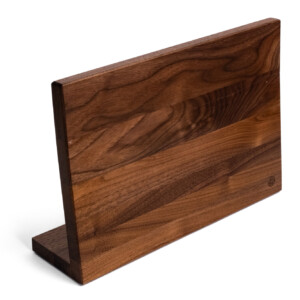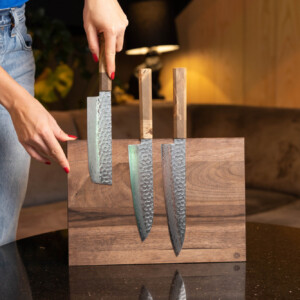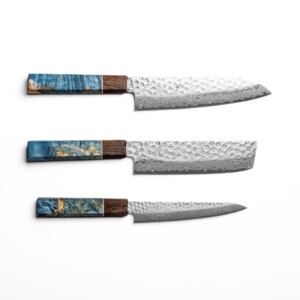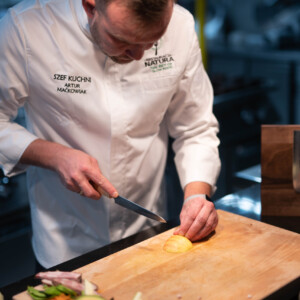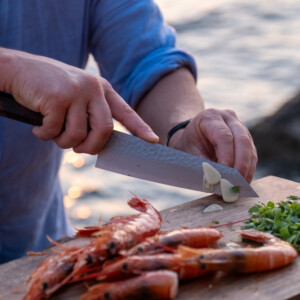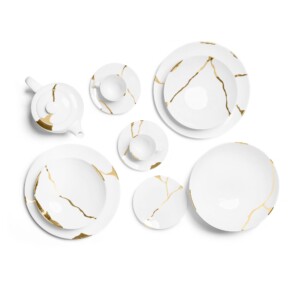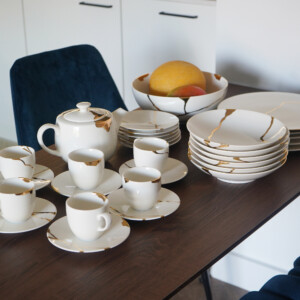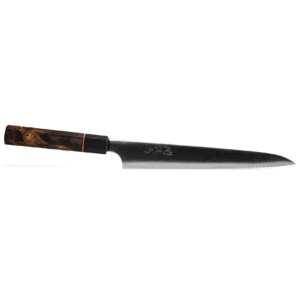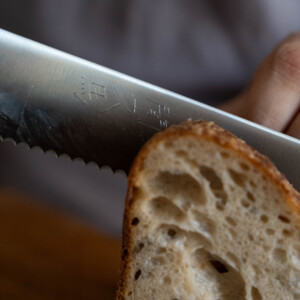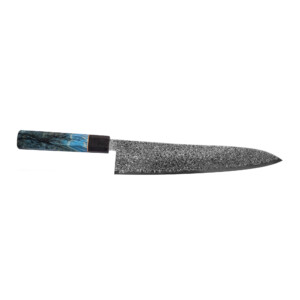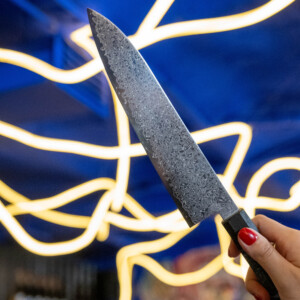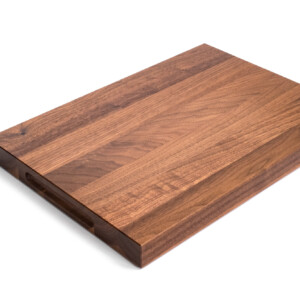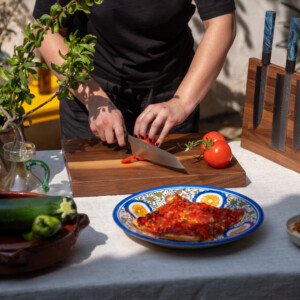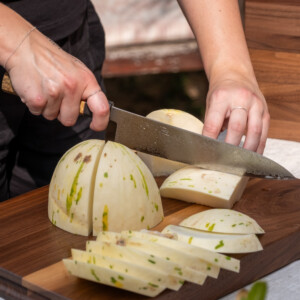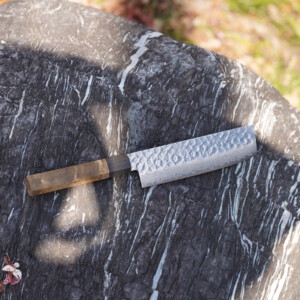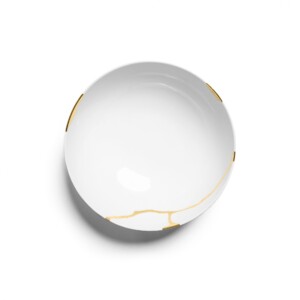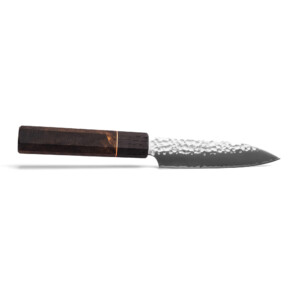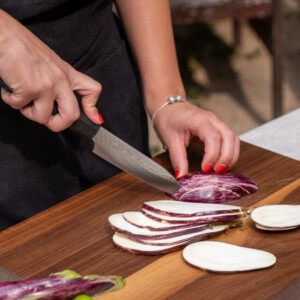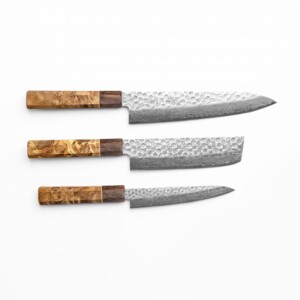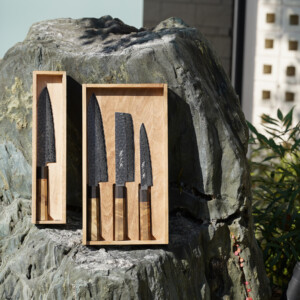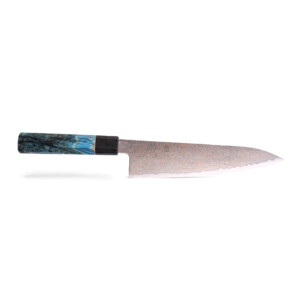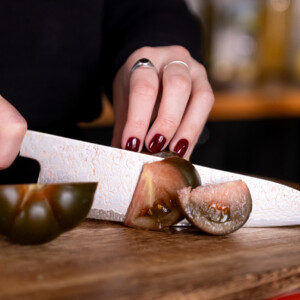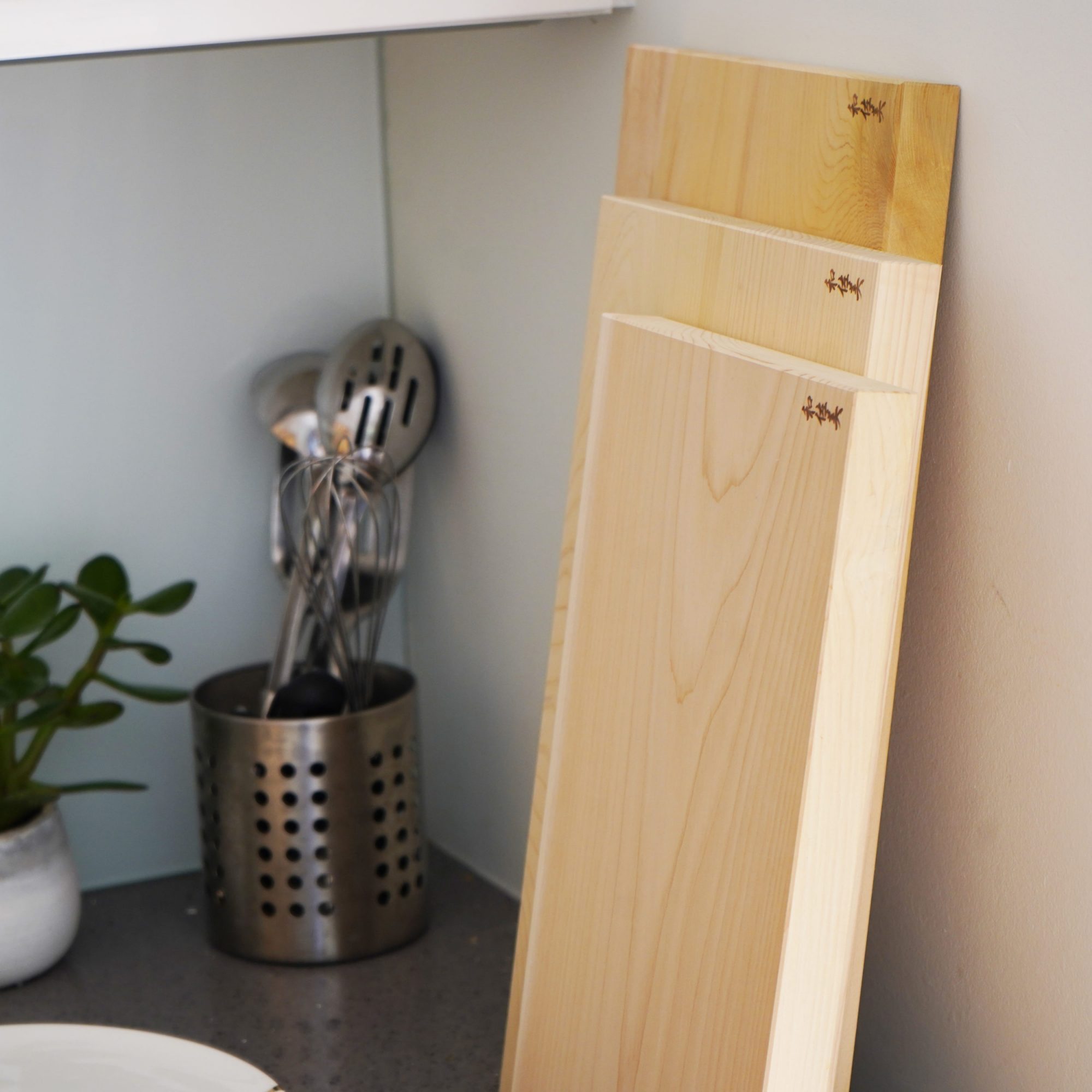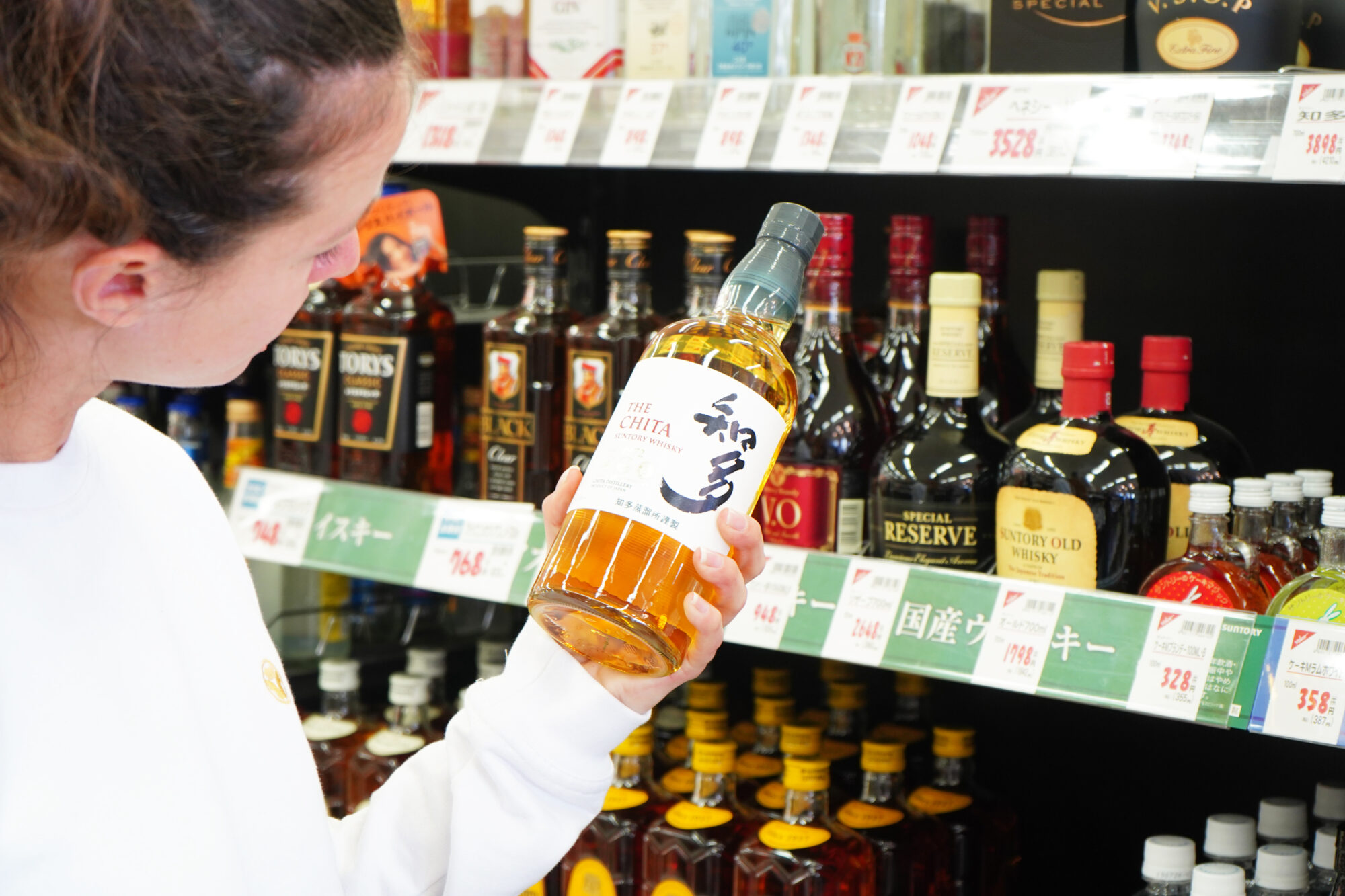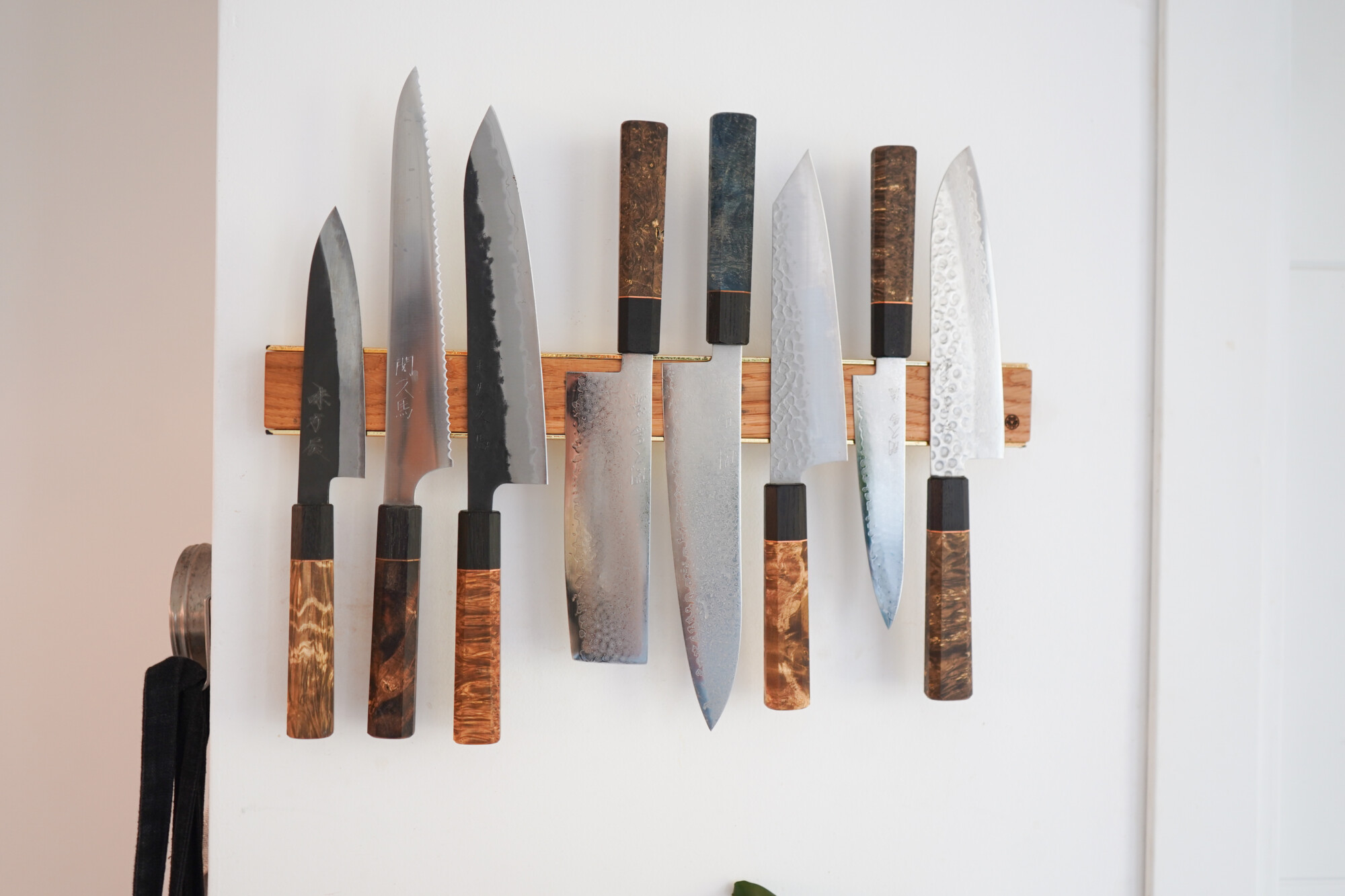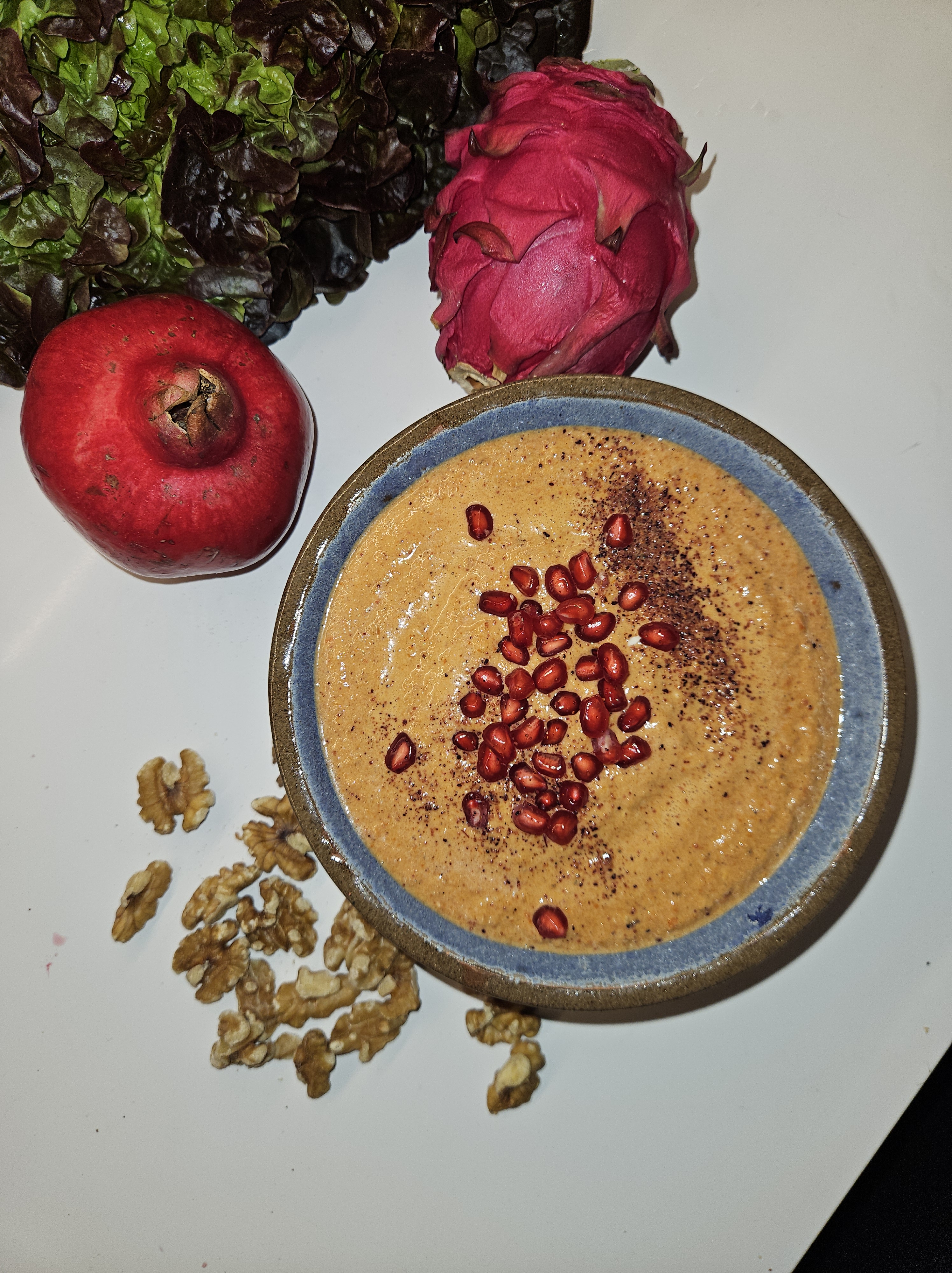When a knife becomes part of your daily cooking ritual, it does more than cut food — it shapes how you cook, how you feel at the counter, and the memories that meal prep makes possible. At Oishya, we believe kitchen tools should be crafted to last and used to spark joy. That’s why knowing the differences between two beautiful, versatile Japanese blades — the Kiritsuke and the Bunka — matters. Whether you’re a home cook who savours the little rituals or a pro who wants a dependable secondary blade, this guide will help you choose with confidence.
Quick snapshot: Kiritsuke vs Bunka (TL;DR)
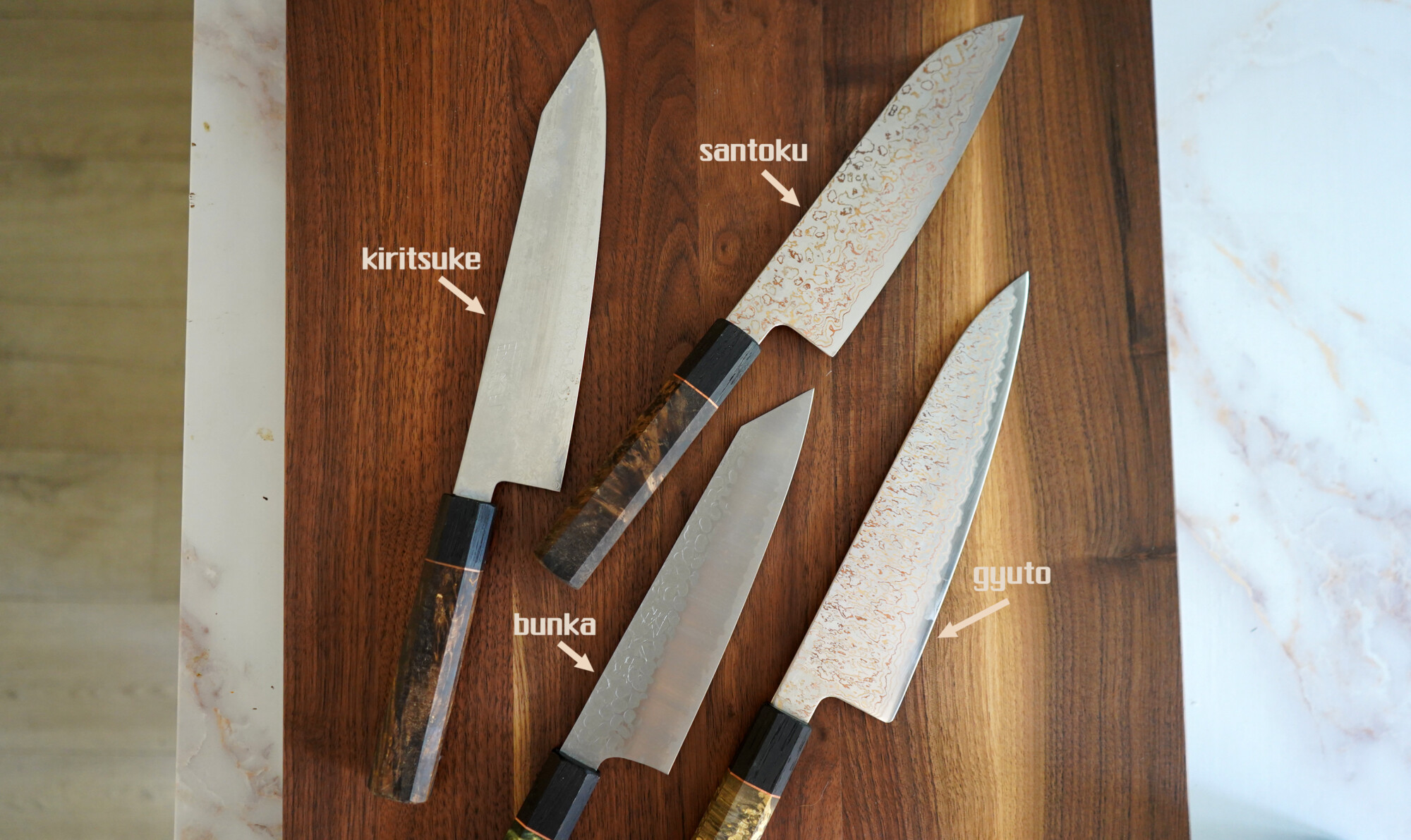
- Kiritsuke: Long, elegant, and precise — a hybrid that rewards technique and shows craftsmanship. Best for long slicing, delicate tip work, and cooks who want a statement blade. (See Oishya SHIN Kiritsuke examples.)
- Bunka: Shorter, nimble, and extremely versatile — a compact, everyday workhorse with a distinctive reverse-tanto tip. Ideal for chopping, dicing, and tip-focused detail work. (See Oishya KATA/NIJI Bunka models.)
Kiritsuke vs Bunka: How to Choose
| Feature | Kiritsuke | Bunka |
|---|---|---|
| Blade Length | 240–330 mm (longer) | 165–180 mm (shorter) |
| Tip Style | Reverse tanto, precise | Reverse tanto, precise |
| Best For | Showpiece slicing, refined knife work | Everyday chopping, dicing, versatility |
| Experience Level | Intermediate to advanced | Beginner to advanced |
| Kitchen Space | Larger prep areas | Perfect for smaller kitchens |
| Vibe | Elegant, ceremonial | Friendly, adventurous |
Origins & personality: what each knife “feels” like
Kiritsuke — the composed virtuoso

Historically associated with head chefs in traditional Japanese kitchens, the Kiritsuke carries authority: long blade, mostly flat profile, and a sharply angled tip. It’s a hybrid of styles (think Gyuto + Usuba + Yanagiba influences) and feels supremely capable when you’re doing long, clean slices of fish, roasts, or when you want razor precision on vegetables. Oishya’s SHIN Kiritsuke brings this classical spirit into a contemporary performance knife, pairing SG2/R2 powdered steel with a hammered Damascus surface for both function and presence.
Bunka — the curious, all-purpose craftsman.
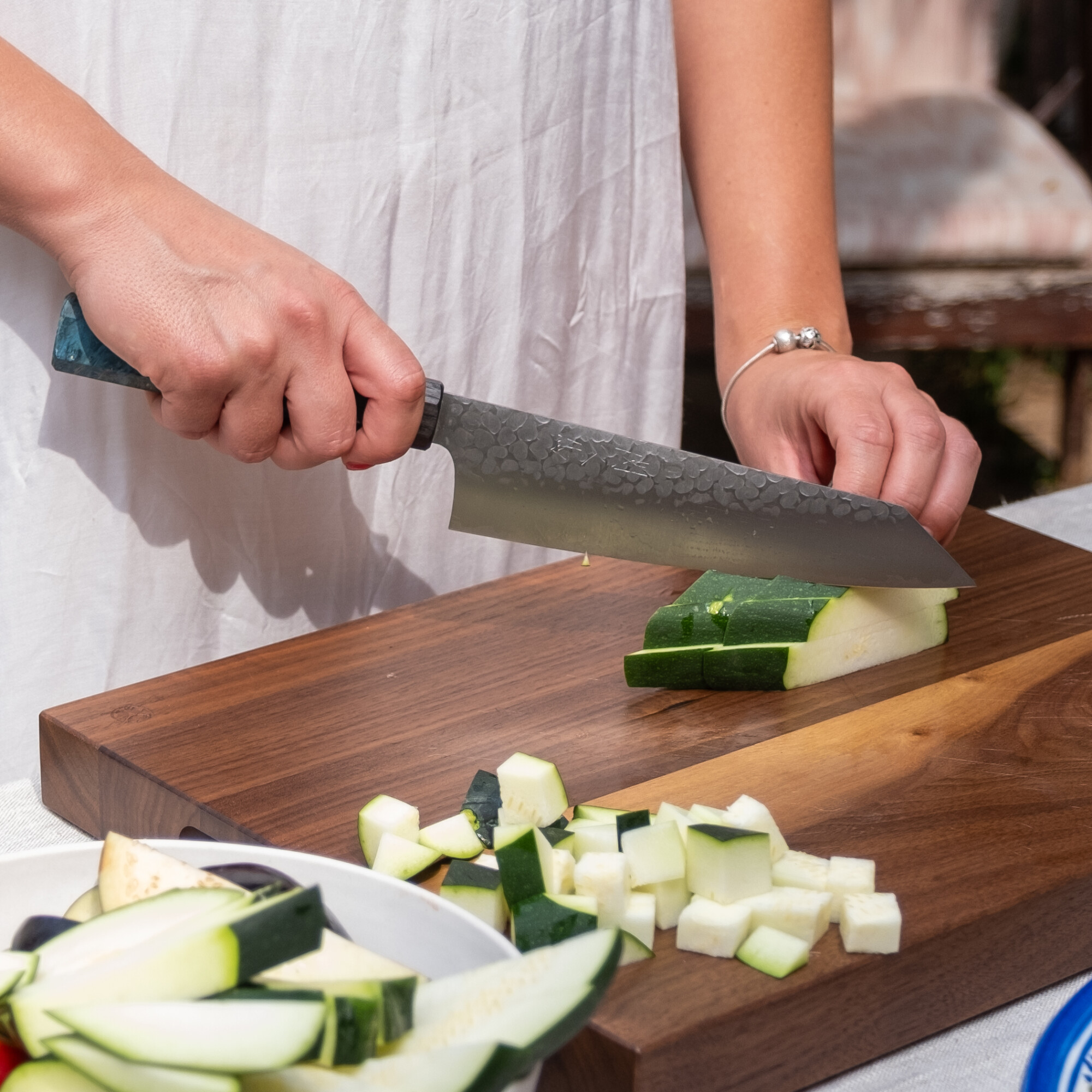
“Bunka” literally hints at culture and versatility. The Bunka is shorter and taller than many chef’s knives, with a reverse-tanto tip that’s excellent for precise tip work (think trimming, peeling, little decorative cuts) while the taller blade gives knuckle clearance for fast chopping. Oishya’s Bunka lines (KATA, NIJI) show how this form combines everyday practicality with refined finishes like VG10 cores and a hammered surface that reduces sticking.
Anatomy & practical differences (what to feel/see at the counter)
- Blade length & reach
- Kiritsuke: often longer (e.g., 21–24 cm in Oishya’s SHIN line) — great for long slicing and larger prep.
- Bunka: typically 16.5–20 cm — compact and nimble; better for smaller hands or tighter spaces.
- Tip shape
- Kiritsuke: angled “reverse tanto” or sloped tip that lets you do flat push-cuts and fine point work.
- Bunka: reverse-tanto tip but shorter — excels at piercing, trimming, and precise cuts in tight spaces.
- Blade profile
- Kiritsuke: flatter profile, longer edge, less curved — best for slicing and push-cuts.
- Bunka: slightly taller blade with a gentle belly — better for quick rocking or chopping and offers more knuckle clearance.
- Bevel & grind
- Both Oishya Bunka and Kiritsuke models (in the double-bevel lines) are made for ambidextrous use and typically come double-bevel — easier for most users to sharpen and handle daily.
Steel, finish & feel: materials that matter
Different steels change the maintenance and the feel at the edge.
- SG2 / R2 (powdered steel) — Extremely fine-grained and holds an edge longer (higher HRC often quoted for SHIN), which gives outstanding slicing performance and crispness — at the cost of slightly more careful maintenance. Great for cooks who love a very fine, long-lasting edge.
- VG10 —Offers a sweet spot between edge retention and user-friendliness. Easier to resharpen than some super steels and more forgiving for everyday home use.
- Damascus / Hammered finishes — both aesthetic and functional: hammered (tsuchime) textures help reduce food sticking, while Damascus layering creates unique patterns and adds toughness.
Which tasks suit each knife? Real kitchen examples
Kiritsuke excels at:
- Long, clean slices of roast, tuna, or smoked salmon.
- Thin, even vegetable sheets and precise sashimi-style work.
- Mise en place for dinner parties where presentation counts.
Bunka excels at:
- Daily chopping of herbs, onions, garlic and veg.
- Dicing and trimming proteins for stir-fries and stews.
- Quick, fiddly tasks (deveining, peeling, end-trimming) thanks to its compact tip.
Choosing by who you are and how you cook
Pick a Kiritsuke if:
- You often prepare long proteins (roasts, fish) and you value long, elegant slices.
- You enjoy practicing knife technique — the Kiritsuke rewards precision.
- Your kitchen has room for a longer blade and you like the drama of a statement knife.
Pick a Bunka if:
- You want one blade that does nearly everything in a small-to-medium kitchen.
- You prefer a compact, nimble knife for quick weekday prep.
- You appreciate the tip-focused detail work of a reverse-tanto profile.
Maintenance: keep it joyful, not tedious
- Sharpening angle: Japanese double-bevel knives commonly sit around 15–20° per side depending on steel and intended use. Super steels (SG2/R2) are usually sharpened in that range but many pros recommend not going under ~15° per side for durability. For everyday VG10 knives, ~15° per side is a great compromise of sharpness and resilience. Use whetstones for best results, and hone regularly to keep the edge aligned between sharpenings.
- HRC & what it means: Higher Rockwell (e.g., 60–64 HRC quoted on Oishya product pages) equals a harder steel that holds an edge longer but can be a bit more brittle — handle with care (no twisting, no bones).
- Daily care: Hand wash, dry immediately, and store on a strip or in a block/sheath. Avoid dishwashers and cutting on glass/metal surfaces. Oishya’s care guides and journal have practical maintenance tips if you want to expand customer education.
Pairing & extras that make life easier
- Sharpening stone kit (waterstone 1k/6k) — best for the SG2 / VG10 family; helps maintain a razor edge. (Oishya sells sharpening stones and has guides on whetstone use.)
- Magnetic strip or shallow block — keeps knives visible and ready; better for blade health than a stuffed drawer. (Oishya’s storage and care accessories are designed to work with their handle profiles.)
Final decision checklist
- Do you want a compact, all-purpose blade? → Bunka.
- Do you want a long, refined slicer and don’t mind practicing technique? → Kiritsuke.
- Unsure? Consider owning both — Bunka for daily tasks, Kiritsuke for special prep and when you want to feel theatrical in the kitchen.
Choosing a blade that creates memories
Knives don’t just cut ingredients; they shape rituals: the rhythm of the chop, the sound of onion falling into a pan, the proud slice served at the table. At Oishya, we design knives to survive decades of use and to be given as heirloom gifts. Whether you pick a Kiritsuke for its long-slicing poetry or a Bunka for its friendly versatility, choose the blade that will make your preparation time easier and more joyful — and one that will be there when traditions and recipes are passed along.
To long to read? Watch our quick tutorial and see those knives in action:
